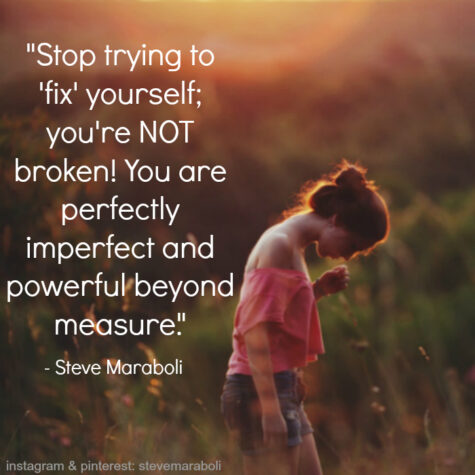Messy and Imperfect
Expanding Time!
By the way… here we are, doing a project all about being messy and imperfect and doing our best with whatever time we have left, right? Have any of you seen the project countdown widget? If you haven’t noticed it, check it out.
Note: If you are viewing this post with a smart phone or similar device, it will show up down toward the bottom of the page. If you are on a laptop or pc, it’s in the sidebar.
I have it set to count down to January 31, 2022. Apparently January is going to be a really really long month because right now, as of today (January 19), according to the countdown widget, we have 893 days. 4 minutes and 58 seconds left in the month of January.
How fun is that?
Joy – Shakti
Now that we have explored Shakti, I thought it might be nice to listen to some Shakti inspired music.
This is from the 1977 album “Shakti With John McLaughlin – A Handful Of Beauty.” If you want to check it out, here’s a link to the full album on YouTube.
Enlivening Shakti
Remember way back at the beginning of this project when I was talking about how life is like a garden? If you don’t remember it, here’s a short excerpt:
It occurred to me that time is like a seed, it starts out compressed and organized and then it explodes into something that cannot and will not ever be put back into that tight little package.
This is also a perfect example of how life might work. In the beginning, before we are born, maybe we are just an idea, a tight little package, neatly organized and full of possibilities. And then we get planted. And with the right conditions, just like a seed, our experience of life explodes just a little bit and a tiny root begins to extend out and down looking for nourishment and a home base. At the same time, we begin to extend up and out reaching for possibilities, the larger world. And there’s this huge drive to be more than we are right now, an irresistible push to expand and grow and be everything we can be.
I’m thinking that if life really is like a garden, maybe an infusion of energy, some metaphysical fertilizer, maybe some extra fairy sprinkles might be called for. With that in mind, I found a nice little article over at Yogapedia.com. It’s all about Shakti. Shakti is the power that nurtures the seed and brings it to fruition.
“Shiva and Shakti represent the masculine and feminine energy of the universe. We also have both energies within us, with Shiva being masculine and Shakti being feminine.
Shiva is the space that holds all the wild and wonderful Shakti energy. Every sound vibration in the universe is filled with the creative force of Shakti. Goddess energy is Shakti energy.”
Here’s the article:
Some days I bounce out of bed ready to tackle the day. Other days, it feels like climbing Mount Everest just to get myself to the meditation cushion!
This depends largely on how much general stress I may be under, how well I have eaten the day before, and what depth of sleep I have gotten. Sometimes I feel in the flow, everything clicking along as planned, and sometimes totally out of sync.
What makes the difference?
Everyone has high energy and low energy days, but to get myself balanced and filled with the mojo I need for my day’s activities, I know I need to listen to my body and my spirit, and take steps to address their needs regularly.
There is no shortage of energy in the universe, but sometimes we block its flow into our lives.
However, if we integrate the physical and spiritual aspects of our being through our yoga practice, we can draw upon the boundless energy that is always available to us, particularly shakti energy.
Here is why you need this divine feminine energy and four ways to build more of it in your life.
Why We Want Shakti
Our spiritual nature is a mirror of the Divine in its transcendental aspect as pure being. Our human nature reflects the activating energy of creation manifest in the world, known as shakti.
Shakti is the creative force of the universe and is the feminine principle of divine energy. As a vehicle for universal Consciousness, shakti is often associated humanly with creativity, fertility and change.
In Hinduism, Shakti is represented as the supreme goddess, or Divine Mother. She is the female counterpart to the divine masculine, Shiva. Within us, the qualities of both deities are embodied: the un-manifest potential of pure consciousness and the active creative energy put into manifestation to live our lives.
Other terms for shakti are chitta shakti or atma shakti. Chit and atma are both names for universal Consciousness.
Therefore, the shakti is the pure power moving into form as an extension of source Consciousness that is individually expressed in each of our lives.
Four Ways to Build More Shakti
We are Spirit come into form; so, the more shakti energy we can draw from the field of potential, the more vital and successful our individual lives become.
Most yoga practices help us to do this physically, mentally, or both. Consider these four approaches to building more shakti, or creative power and energy, in your life today.
- 1. Breathe Effectively
The power of shakti can be channeled through conscious breathing. By remembering to breathe slowly and deeply, we immediately begin drawing in more shakti.
Furthermore, techniques such as alternate nostril breathing (nadi shodhana) can increase and balance the movement of energy through the main nadis, or channels, in and around the spine.
To practice nadi shodhana:
Begin by curling your index and middle fingers into your palm.
Close the right nostril with your thumb.
Inhale through the left nostril.
Then close the left nostril with your ring finger and exhale through the right nostril.
Inhale again through the right.
Close the right nostril with your thumb and exhale through the left.
Inhale left, close, exhale right.
Inhale right, close, exhale left.
Keep up this pattern of changing the closure on the exhalation for several more minutes.
This is alternate nostril breath and, with consistent practice, it will regulate the shakti and you will be able to breathe more fully and clearly.
- 2. Stop the Energy Drains
Take stock of the energy expenditures in your life. Are you giving too much time and focus to work and not enough to exercise or creative pursuits? Are you worrying constantly rather than asking for help or trusting the flow of life? Are you ruminating over some past hurt, resentment or lost love?
Energy drains come in many forms. They are especially apparent when we are not practicing self-control in the ways we know we should. They zap our shakti and deplete our power of creation in the here and now. Over time, they can cause illness and severe fatigue. Where do you need to stop the energy drain?
Consider taking a day in silence to get recalibrated or doing more activities such as eating meals in silence. Talking all the time or being around others talking can drain us. Silence is healing for the soul. If we can combine silence with being in nature, it is even more powerful.
The shakti of Mother Earth replenishes us through sunlight, fresh air and the powerful sense of being at one with the natural elements.
- 3. Maintain a Virtuous Lifestyle
When we think of a healthy lifestyle, obviously there are the minimum requirements, such as the right amount of water, balanced nutrition, proper physical movement and rest. However, at a deeper level of health, “The Yoga Sutras of Patanjali” recommend internal as well as external practices that put us into a state of harmony and virtue.
Ultimately, true power is created through the alchemy of living in integrity, wisdom and humility. A healthy lifestyle is one that encompasses right action inwardly and outwardly. This would include practicing peacefulness, generosity, self-control, contentment, introspection and devotion.
Engaging some self-reflection can illuminate an aspect of your health that needs a tune-up at this time. Are you avoiding some truth you know you need to face? Are you taking reflective time to listen to your inner wisdom and be self-honoring? Are you allowing unbridled desires to drive your choices in an unhealthy way?
- 4. Develop a Spiritual Practice
Most of every day is spent developing our material lives — our careers, hobbies, physiques, etc. — but, for true success, we need to develop our spiritual lives as well. In the same way that a slow, gentle Yin yoga class can balance our bodies when we are feeling a lot of strong yang energy, our spiritual practice balances our ability to receive as well as to do.
To access an understanding and experience of your spiritual nature, many different practices can be used. Silent reflection, prayer, mantra repetition and devotional chanting are all ways that we can draw closer in our hearts to the connection we have with the divine Spirit.
These techniques help prepare us for sitting in the stillness of meditation through which we can cross the bridge from human awareness to spiritual awareness. In this unified state, the shakti of creation merges back into the universal Consciousness and we experience true Self once again.
Try This Shakti Visualization
To practice awakening your Shakti, practice bringing your attention to your body and to your world. Now visualize that everything in your awareness — everything you see, feel, sense, both inside and out — is made up of the goddess energy.
See everything as a manifestation of this divine feminine Shakti. Take a deep breath and imagine that the air you breathe sparkles with Shakti.
Your lungs are filled with the eternal vibration of Shakti. Even your mind is filled with shining particles of Shakti energy. In essence, the goddess is everything.
Source: Yogapedia.com
Just Be Flawsome
It Matters
Yesterday we read a little bit about Shame. One of the quotes went something like this:
Perfectionism is, at its core, about trying to earn approval and acceptance. Perfectionism is other-focused—What will they think?
There was more to it, but it got me thinking, because it really does matter what other people think. I know that a lot of self help, self esteem, psychologists and counselors will tell you that it doesn’t matter what other people think of you. Which sounds comforting, but it’s not exactly true.
We live in a society, a world full of other people and it really does matter what other people think. For example:
- To a defendant in a courtroom, it totally matters what those twelve people in the jury think.
- Looking for employment? The approval and acceptance of others is very important.
- If you want to keep your job, or get a promotion, what your supervisor thinks of you matters quite a lot.
- Suppose you go missing, or get lost in the woods. If nobody cares what happens to you, will you ever be found?
- A homeless person walks into a restaurant… what other people think will determine whether or not he gets a hot meal or a “police escort” out of the building.
- You get stopped for a traffic violation… you think it doesn’t matter what the cop thinks of you? It matters.
I could probably come up with a bunch more examples, but you get the point. It’s not unusual for our survival to depend on the acceptance and approval of others.
Which brings me to my point. Perfectionism is a survival mechanism. Fear of failure is a survival mechanism. I think the trick is to create a space for yourself where imperfection is acceptable, failure is expected, and you can just be real without worrying about how you will feed your family, pay the bills, and take care of the practical things.
If you can find your “tribe,” your circle of friends who know and love you for who you really are, it becomes simple to put on the “fit into the larger world” suit when you need to.
So, how do you find your tribe? I think it comes down to, accepting and loving yourself… your flaws, faults and imperfections as well as your talents, skills, and special attributes. Each one of us is a complex collection of pretty much everything in varying amounts… the good, the bad, the ugly… and we are each beautiful in our own way.
- If you can’t love and accept yourself for who you really are, how can you expect someone else to?
- If you can’t love and accept your family and friends for who they really are, why are you hanging around with them?
- If the people you are hanging around with don’t love and accept you for who you really are, find people who will.
So… those are my thoughts for today. Anybody have anything they want to add?
Shame
It occurred to me that no conversation about imperfection and failure is complete until we address that one thing that most of us will go to great lengths to avoid. Shame.
Here are some thoughts about shame by Brené Brown that can be found in her book: The Gifts of Imperfection: Let Go of Who You Think You’re Supposed to Be and Embrace Who You Are.
What is shame?
Shame is that warm feeling that washes over us, making us feel small, flawed, and never good enough.
Here are the first three things that you need to know about shame:
- We all have it. Shame is universal and one of the most primitive human emotions that we experience. The only people who don’t experience shame lack the capacity for empathy and human connection.
- We’re all afraid to talk about shame.
- The less we talk about shame, the more control it has over our lives.”
People often want to believe that shame is reserved for the folks who have survived terrible traumas, but this is not true. Shame is something we all experience. And while it feels as if shame hides in our darkest corners, it actually tends to lurk in all of the familiar places, including appearance and body image, family, parenting, money and work, health, addiction, sex, aging, and religion. To feel shame is to be human.
We’re all capable of developing shame resilience. Shame resilience is the ability to recognize shame, to move through it constructively while maintaining worthiness and authenticity, and to ultimately develop more courage, compassion, and connection as a result of our experience. The first thing we need to understand about shame resilience is that the less we talk about shame, the more we have it.
Shame needs three things to grow out of control in our lives: secrecy, silence, and judgment. When something shaming happens and we keep it locked up, it festers and grows. It consumes us. We need to share our experience. Shame happens between people, and it heals between people. If we can find someone who has earned the right to hear our story, we need to tell it. Shame loses power when it is spoken.
She goes on to say:
After a decade of research, I found that men and women with high levels of shame resilience share
these four elements:
- They understand shame and recognize what messages and expectations trigger shame for them.
- They practice critical awareness by reality-checking the messages and expectations that tell us that being imperfect means being inadequate.
- They reach out and share their stories with people they trust.
- They speak shame—they use the word shame, they talk about how they’re feeling, and they ask for what they need.’
When we experience shame, we feel disconnected and desperate for worthiness. Full of shame or the fear of shame, we are more likely to engage in self-destructive behaviors and to attack or shame others. In fact, shame is related to violence, aggression, depression, addiction, eating disorders, and bullying.”
Here’s what she has to say about guilt and shame, and the differences between them:
Guilt = I did something bad.
Shame = I am bad.
Guilt is just as powerful as shame, but its effect is often positive while shame often is destructive. When we see people apologize, make amends, or replace negative behaviors with more positive ones, guilt is often the motivator, not shame. In fact, in my research, I found that shame corrodes the part of us that believes we can change and do better.
And then there’s this bit about perfectionism.
Where perfectionism exists, shame is always lurking. In fact, shame is the birthplace of perfectionism.
Shame is a daunting word. The problem is that when we don’t claim shame, it claims us. And one of the ways it sneaks into our lives is through perfectionism.
Perfectionism is not the same thing as striving to be your best. Perfectionism is not about healthy achievement and growth. Perfectionism is the belief that if we live perfect, look perfect, and act perfect, we can minimize or avoid the pain of blame, judgment, and shame. It’s a shield. Perfectionism is a twenty-ton shield that we lug around thinking it will protect us when, in fact, it’s the thing that’s really preventing us from taking flight.
Perfectionism is not self-improvement. Perfectionism is, at its core, about trying to earn approval and acceptance. Most perfectionists were raised being praised for achievement and performance (grades, manners, rule-following, people-pleasing, appearance, sports). Somewhere along the way, we adopt this dangerous and debilitating belief system: I am what I accomplish and how well I accomplish it. Please. Perform. Perfect. Healthy striving is self-focused—How can I improve? Perfectionism is other-focused—What will they think?
Research shows that perfectionism hampers success. In fact, it’s often the path to depression, anxiety, addiction, and life-paralysis.
Life-paralysis refers to all of the opportunities we miss because we’re too afraid to put anything out in the world that could be imperfect. It’s also all of the dreams that we don’t follow because of our deep fear of failing, making mistakes, and disappointing others. It’s terrifying to risk when you’re a perfectionist; your self-worth is on the line.’
Perfectionism is self-destructive simply because there is no such thing as perfect. Perfection is an unattainable goal. Additionally, perfectionism is more about perception—we want to be perceived as perfect. Again, this is unattainable—there is no way to control perception, regardless of how much time and energy we spend trying.
To overcome perfectionism, we need to be able to acknowledge our vulnerabilities to the universal experiences of shame, judgment, and blame; develop shame resilience; and practice self-compassion. When we become more loving and compassionate with ourselves and we begin to practice shame resilience, we can embrace our imperfections. It is in the process of embracing our imperfections that we find our truest gifts: courage, compassion, and connection.
Nothing Is Perfect
Repairing Perfection
“There is a crack in everything. That’s how the light gets in.”
~Leonard Cohen
Stuff breaks. Today, broken things are often discarded. This was also true in the past. However, both today and in the past, some things—special things—are repaired. Their specialness may come from their economic, symbolic, or political value; their beauty; or their connections to personal or family history.
All of the objects in the Repairing Perfection section of the Less Than Perfect Art Exhibition have been repaired. Many of the repairs were purely practical: to allow objects to continue to serve their intended function. Some repairs were concealed to make the objects appear new. Others are visible, when menders chose not to hide their work.
While all repairs fix broken objects, some are meant to be seen and admired in their own right. They add to an object’s beauty and celebrate its history, including the harms it has suffered. The gold-lacquer kintsugi repaired vessels provide striking examples of this approach.
Most people don’t purposefully shatter their cherished pieces of pottery, but that isn’t always the case in Japanese culture. Adorning broken ceramics with a lacquer mixed with powdered gold is part of a more than 500-year-old Japanese tradition that highlights imperfections rather than hiding them. This not only teaches calm when a cherished piece of pottery breaks; it is a reminder of the beauty of human fragility as well.
Rather than concealing imperfections, the joins of these repaired vessels are defined by bright gold lacquer in a technique known as kintsugi or “golden joinery.” Multiple layers of lacquer are applied to bond fragments of a broken vessel together. Gold dust is mixed into the final layer to highlight the joins. The elegant repairs celebrate the age and history of the vessel, enhancing its beauty and marking it as a valued heirloom.
This centuries-old art is more than an aesthetic. For the Japanese, it’s part of a broader philosophy of embracing the beauty of human flaws.
In a world that so often prizes youth, perfection and excess, embracing the old and battered may seem strange. But the 15th-Century practice of kintsugi is a reminder to stay optimistic when things fall apart and to celebrate the flaws and missteps of life.
In an age of mass production and quick disposal, learning to accept and celebrate scars and flaws is a powerful lesson in humanity and sustainability.
Sources:
Deliberate Imperfection
“Nothing we see or hear is perfect.
But right there in the imperfection is perfect reality.”
~Shunryu Suzuki
Some people are perfectionists, going great lengths and through punishing routines to achieve the perfect figure, the perfect score, the inimitable performance. But there are cultures around the world that have learned to abandon this rigid and obsessive behavior, and embrace the concept of imperfection. Artists and craftsmen of such cultures would deliberately introduce flaws into their works to remind themselves that flaws are an integral part of being human.
In Navajo culture, rug weavers would leave little imperfections along the borders in the shape of a line called ch’ihónít’i, which is translated into English as “spirit line” or “spirit pathway. The Navajos believe that when weaving a rug, the weaver entwines part of her being into the cloth. The spirit line allows this trapped part of the weaver’s spirit to safely exit the rug.
The Navajos also believe that only God is perfect and that humans cannot achieve the same perfect level. So they make sure to leave little imperfection in anything they create. Usually, one has to look very close to find the imperfection, so it does not detract from the beauty of the item. It might be a loose piece of yarn, or a different colored bead.
That God is perfect and humans are not is also one of the main principles of Islamic architecture. The beautifully decorated vaulted ceilings of many mosques in the Arab world appear symmetric, but often have minor irregularities imperceptible to most visitors.
Even the National Cathedral in Washington, D.C., the capital of the United States, has several small architectural flaws that has been attributed to an apocryphal medieval custom that sought to illustrate that only God can be perfect. The ceiling that arches over the main aisle of the cathedral do not meet at the center, but is slightly off its axis. The choir-stalls along the nave of the church are also not aligned.
In the Punjab region of India and Pakistan, an embroidery technique called Phulkari, which literally means flower work, is highly popular. Intricate patterns using brightly colored threads are woven into shawls and head scarfs and other garments by women for their own use or for their family.
Most Phulkari patterns are highly regular, but sometimes women introduce small color or pattern changes into their work. Some are added to protect the shawl’s wearer from the evil eye. Others are stitched to mark important events that occurred during a textile’s creation, such as the joy of a baby’s birth or grief over a relative’s death.
In Japan, incorporating deliberate imperfections is a necessary ingredient of art. This aesthetic concept is known as “Wabi sabi” and has been practiced since at least the 16th century. Characteristics of the wabi-sabi aesthetic include asymmetry, roughness, and simplicity, and appreciation of the ingenuous integrity of natural objects and processes.
The wabi sabi concept is also seen in the robes worn by Buddhist monks. Known as “kesa”, these robes draped diagonally across the body feature a small patchwork construction as a reminder of the humble patched garment worn by the Buddha.
These concepts, aside from paying homage to God, reinforce the idea that there is beauty in imperfections, and beauty itself is imperfect, impermanent, and incomplete.
Sources:
Failed Perfection
“Ever tried. Ever failed.
No matter. Try again. Fail again. Fail better.”
What can we learn from failure? A great deal. The objects in this section (of the Less Than Perfect Exhibition) are, mainly, failures. Most failed at the time of production. They were victims of inadequate preparation, random gusts of wind, or a careless slip of the hand.
For many, production flaws rendered them unusable and they were discarded. For others, the flaws mattered far less. Coins could still be exchanged even if their main image was off center. Warped ushabti figures could still accompany the dead.
- Did ancient artisans see beauty in failure?
- Or—more likely—did they grumble when they realized their hard work had not yielded its desired results?
Whichever the case, failures led artists and craftspeople to make new discoveries, improve production techniques, and gain better control over raw materials, tools, and facilities.
Archaeologists also learn from studying imperfect objects. Failed objects capture a moment when things did not go as planned. They allow us to witness ancient experiments, track technological innovations, and understand acceptable loss in early mass production. They let us see the products of learners and skilled and less skilled laborers. And, sometimes, their failed perfection yields charm, humor, and great beauty.
- Radical Self Care Project Overview by shirleytwofeathers - No Comment
- Radical Self Care Image Gallery by shirleytwofeathers - No Comment
- It’s A Wrap by shirleytwofeathers - 3 Comments
- Something To Consider by shirleytwofeathers - 1 Comment
- Nurturing Your Precious Self by shirleytwofeathers - 3 Comments
B. Joy Barrett: beautiful-turquoise-upholstered-accent-chair-for-living-room-with-within-colorful-accent-chairs-colorful-accent-chairs-transforms-the-look-of-a-room
Claudette Losier: Why Does It Work?
me: Make Your Own Violet Fire
Abdulrahman: Money Chant – Very Fast
Shirley Twofeathers: It’s A Wrap




























